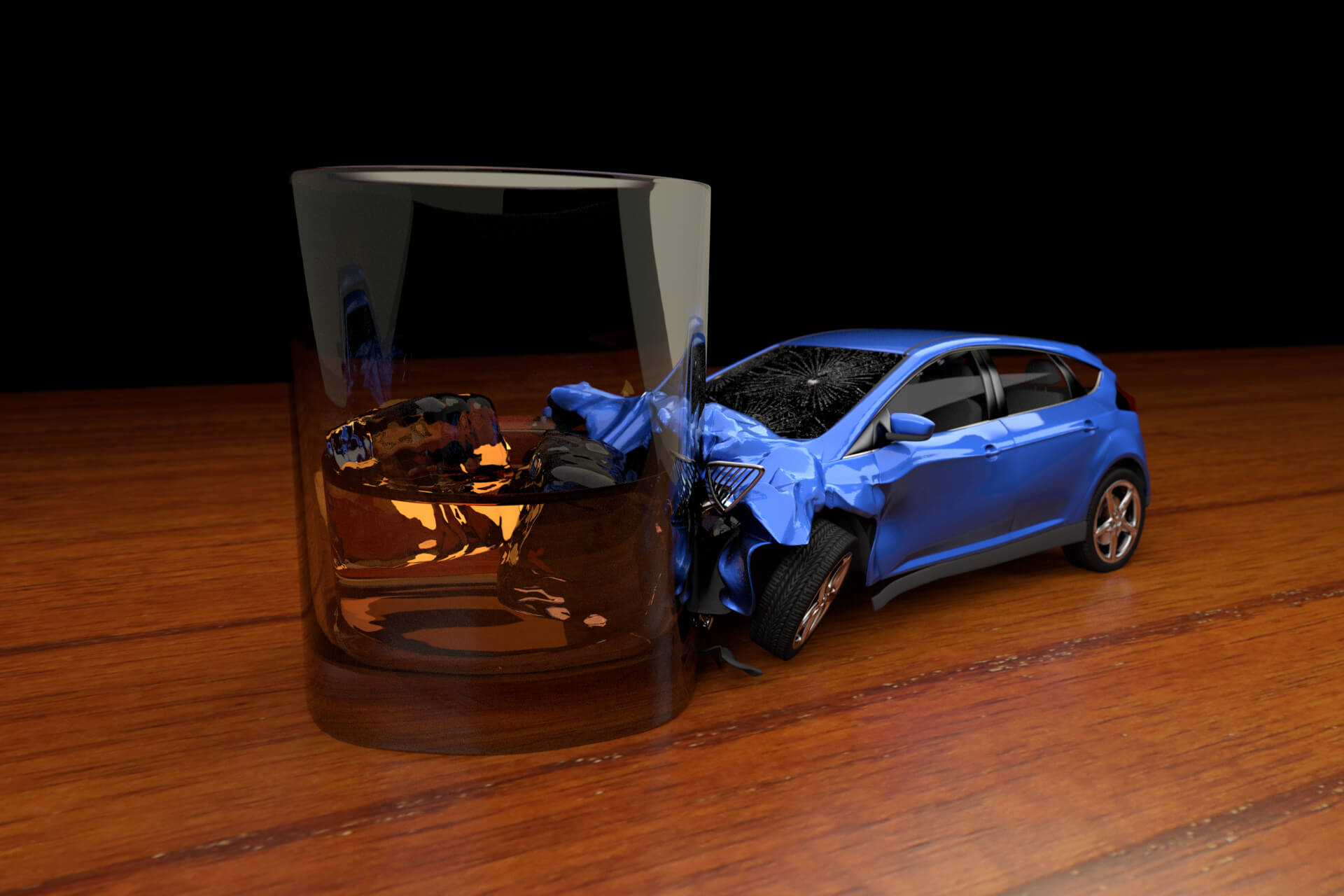The Ultimate Solution to Impaired Driving is Within Reach
12:01 AM EDT on April 25, 2023

Image via Creative Commons
Making roads safer often involves doing a lot of little things. There’s no single reason crashes occur and no single way to protect people from death and injury. When we discuss a given solution — whether it’s in the realm of vehicle technology, road design or enforcement — we are usually talking about shaving off a few hundred fatalities from the annual toll at best.
But recent action by Congress opens the door to something much bigger. If we seize this opportunity, we could put an end to one of the most persistent highway safety problems — impaired driving — and prevent more than 9,000 deaths a year.
Tucked into the sprawling bipartisan infrastructure law passed in 2021 is a congressional mandate for the National Highway Traffic Safety Administration to require every new passenger vehicle to be equipped with a system that prevents an alcohol-impaired driver from operating it.
The law is a huge victory for advocates, led by victims of impaired driving and Mothers Against Drunk Driving, but plenty of safety rules have withered on the vine despite legislative action. It’s the job of federal agencies to flesh out Congress’ intentions, and they sometimes deviate from them.
In this case, NHTSA must complete several large tasks before issuing a final regulation. The agency will need to research the breadth of potential technologies before determining what tests and criteria to use to evaluate manufacturer compliance. It’s also expected to come up with a cost estimate for equipping the fleet and compare that with the total societal cost of illegal impaired driving ($296 billion in 2019 by NHTSA’s own calculation). Finally, it must publish a proposed regulation, weigh public comments and make revisions as needed. The process doesn’t lend itself to shortcuts, which is why it’s crucial that the agency proceed without delay.
The technology itself is closer to being ready than most people realize. But because few consumers would pay extra to equip their vehicle with an impaired driving prevention system, automakers have had little incentive to bring it to market. A regulatory requirement would push it over the finish line.
One system already being tried out in fleets was developed by the Driver Alcohol Detection System for Safety (DADSS) project, a partnership between NHTSA and the auto industry. The DADSS breath-based system is in some ways similar to ignition interlocks that are often installed by court order on the vehicles of people convicted of driving while intoxicated. However, unlike those interlocks, the passive system doesn’t require the driver to blow into a tube or take any special action; it simply analyzes the driver’s exhalations from normal breathing and prevents the vehicle from moving if it determines the driver has had too much to drink. The consortium is also working on a touch-based system that would analyze the driver’s skin.
Other technologies have been developed to detect signs of erratic driving, fatigue or distraction. We at IIHS are encouraging manufacturers that offer partial automation on their vehicles to include robust driver monitoring that can issue warnings if a driver isn’t paying attention to the road and ultimately stop the vehicle if those alerts are ignored. The same types of systems could be used to detect signs of impairment and keep the vehicle from moving any further.
Fewer people drink and drive today than in past decades: Just 1.5 percent of drivers were over the legal limit in 2013-14, the last time NHTSA conducted its national roadside breath survey. Yet those people are responsible for an outsize number of fatalities. Impaired-driving deaths plummeted in the 1980s and early 90s, but for the last 30 years, progress has stalled. In 1994, 33 percent of fatally injured drivers had a blood alcohol concentration (BAC) of 0.08 percent or higher; in 2021, the proportion was 29 percent.
These numbers help explain the results of a new survey published today by researchers from Johns Hopkins University. Sixty-five percent of respondents agreed that impairment prevention should be standard on all new vehicles, making it far more popular than speed limiters or cell phone blocking technology.
A few years ago, my IIHS colleague Chuck Farmer quantified how many lives could be saved by preventing anyone with a BAC of 0.08 percent or higher from driving. He found that from 2015-18 an average of 9,409 deaths per year, or about a quarter of fatalities, could have been averted. More people than that die in crashes in which a driver is over the legal limit, but Chuck accounted for the fact that some of those crashes would have occurred anyway. (If drivers were not permitted to have any alcohol in their systems, he found that about 12,000 lives a year would be saved.)
In the infrastructure law, Congress cited Chuck’s finding and gave NHTSA three years to issue a rule requiring the technology. The law instructs the agency to give manufacturers two to three years to comply, and the agency must explain any delay in a report to Congress.
The provision’s two main congressional champions, Sen. Ben Ray Luján of New Mexico and Rep. Debbie Dingell of Michigan, are trying to keep the effort on track. They have convened a technical working group, which I am a member of, to support NHTSA in its rulemaking. Our group has developed several principles to ensure rapid, effective and equitable implementation of the mandate.
First, deliberate progress is essential. We are calling on NHTSA to adhere to the timeline laid out in the law with the most ambitious regulation possible.
Second, comprehensive function should be the goal. While the law is aimed at preventing alcohol-impaired driving, the same basic technology and regulatory framework could be used to prevent driving with impairment of any type, including from other drugs, fatigue, distraction or inattention.
Congress gave NHTSA the flexibility to decide exactly what kind of systems to require. One possibility is technology similar to what DADSS has developed that can directly measure a driver’s BAC. The other option is technology that tracks a driver’s eyes or monitors their performance to identify likely impairment.
We believe NHTSA should allow both approaches in its regulation. Measuring BAC directly is the most straightforward method, but allowing other approaches would make it easier for automakers to expand the technology to other types of impairment — and for NHTSA to expand the regulation in the future.
Finally, this effort will only succeed if we maintain public support for it. To do that, we can’t allow the technology to be used for anything beyond preventing dangerous driving and we must ensure drivers’ privacy is protected. Any impairment detection technology needs to function correctly for all types of people, regardless of their appearance or physical limitations.
An impaired driving prevention requirement will be transformational for safety, but the transformation won’t happen overnight. Not everyone drives a brand new vehicle, so it will take decades for these systems to be universal even if Congress’ mandate is fulfilled. That means it’s way too early to cast aside other, more incremental approaches to reducing impaired driving. Solutions like sobriety checkpoints and other high-visibility enforcement campaigns, court-ordered interlocks, strict enforcement of 21 as the drinking age, and changing the legal definition of impairment to start at a BAC of 0.05 percent have all been shown to make a difference.
Reducing the toll from crashes still requires us to do a lot of little things and likely always will. But our job will be much easier if we get this one big thing right.
This article originally appeared on the Insurance Institute for Highway Safety's Insight Blog and is republished with permission.
Kea Wilson is editor of Streetsblog USA. She has more than a dozen years experience as a writer telling emotional, urgent and actionable stories that motivate average Americans to get involved in making their cities better places. She is also a novelist, cyclist, and affordable housing advocate. She previously worked at Strong Towns, and currently lives in St. Louis, MO. Kea can be reached at kea@streetsblog.org or on Twitter @streetsblogkea. Please reach out to her with tips and submissions.
Stay in touch
Sign up for our free newsletter
More from Streetsblog USA
Are Friday’s Headlines the New Normal?
Transit ridership hasn't come all the way back from the pandemic, and they're going to need more federal help, along with other changes, says Governing magazine.
Friday Video: How to Make Places Safe For Non-Drivers After Dark
A top Paris pedestrian planner, a leading GIS professional, and Streetsblog's own Kea Wilson weigh in on the roots of America's nighttime road safety crisis, and the strategies that can help end it.
OPINION: Congestion Pricing Will Help My Family Get Around As We Navigate Cancer Treatment
My partner was recently diagnosed with cancer. Congestion pricing will make getting her to treatment faster and easier.
Talking Headways Podcast: Money is a Lot of Different Things
It's Part II of our discussion with Jim Kumon!
If Thursday’s Headlines Build It, They Will Come
Why can the U.S. quickly rebuild a bridge for cars, but not do the same for transit? It comes down to political will and a reliance on consultants.





